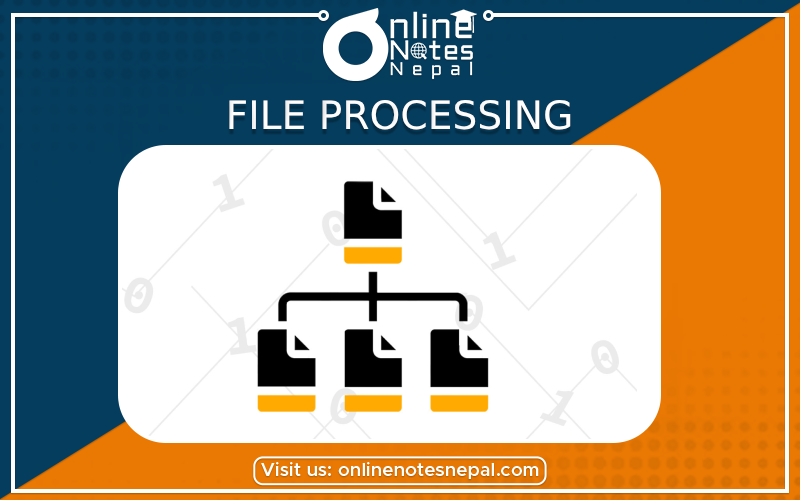Published by: Anu Poudeli
Published date: 01 Aug 2023

The modification and administration of data held in files on a computer system is referred to as file processing. It entails reading, writing, and altering files in order to store and retrieve data. File processing is a fundamental part of computer programming that is often utilized in data storage, retrieval, and manipulation applications. Here are some basic file processing ideas and operations:
1.File Formats:
Files are classified into various kinds based on their content and format. Text files (containing plain text), binary files (keeping data in a non-human-readable format), and structured files (e.g., CSV, XML, JSON) that hold data in a specific format are all common file types.
2.File Operations:
There are various basic operations involved in file processing, such as:
3.File Access Modes:
Files can be opened in a variety of ways, including read mode ('r'), write mode ('w'), append mode ('a'), and binary mode ('b'). The access mode specifies how the file can be accessed and whether existing data is rewritten or maintained.
4.Handling Errors:
File processing failures can include file not found, permission issues, and disk full errors. To manage and respond to these situations graciously, proper error handling is required.
5.Random Access vs. Sequential Access:
Data is read or written sequentially from the beginning to the end of a file in sequential file processing. Random access file processing, on the other hand, offers direct access to any region of the file, making it suited for huge files with specialized data retrieval requirements.
6.Serialization : It is the process of translating data structures or objects into a storage format (for example, converting Python objects to JSON or XML), and deserialization is the process of turning serialized data back to the original data structures.
7.Management of directories and files:
Create, delete, and rename files or directories in the file system are all examples of file processing.
Many programs, including database systems, text editors, spreadsheet software, and web development, rely on file processing. To efficiently manage data and maintain data integrity and security, programmers must be conversant with file processing techniques and best practices. Specific libraries and APIs for file processing activities may be provided depending on the programming language or platform used.